Balalaika game for beginners
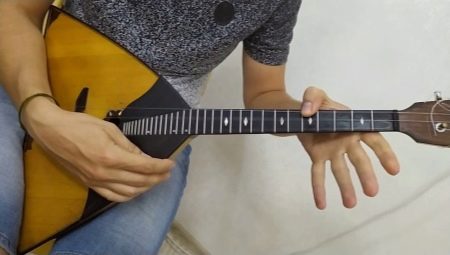
Balalaika is one of the main symbols of Russia, but at present it is not very popular among young people. Just a century ago, the balalaika could be played not only by representatives of the poor, but also by high-ranking officials. There is evidence that even members of the royal family entertained themselves by playing this musical instrument. Many writers and composers have spoken about the balalaika. There is nothing wrong with learning to play it. After all, this will not only help in the future to learn how to play the guitar, ukulele or other stringed instruments, but it is also quite easy and fun. Only 3 strings are capable of playing entire songs. Read about what to expect from playing the balalaika, as well as basic points for beginners, in this article.
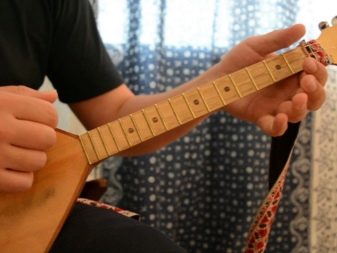
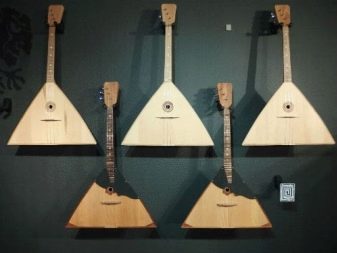
Basic rules for beginners
To learn how to play the balalaika from scratch, you first need to study the components of the instrument.
- Frame. It is the largest part of the balalaika and has a triangular shape. In turn, it consists of a prefabricated lower body, a top deck and a heel counter. The listed elements as a whole form the acoustic part of this folk musical instrument. The soundboard has a resonator hole through which sounds from vibrations of the balalaika strings are transmitted for amplification.
- Vulture. The narrow and long part of the tool that is mounted to the body. Usually made from ebony. Strings stretch over it. The neck is divided into frets by metal nut. The musician presses the strings on the frets to these thresholds, due to which the sound of the strings changes.
- The smallest part is the headstock. There is a tuning mechanism on it, which is necessary for attaching the strings and tuning them.
Any balalaika has more than 70 different parts. The balalaika acquired its modern look relatively recently - at the end of the 19th century.
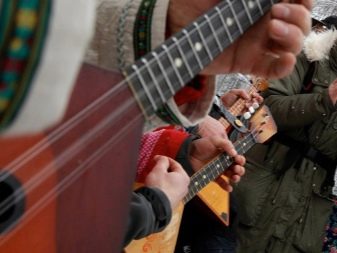
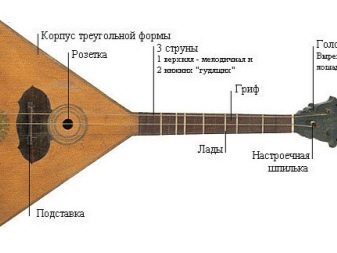
It is believed that learning to play the balalaika, as already mentioned, is not as difficult as learning to play the guitar or violin. The reason is simple - the presence of a relatively small number of strings (3 pieces) and a short neck length. And you also need to be prepared for the fact that the pads of the fingers will be injured and hurt.
Another important rule is to learn how to properly hold the instrument in your hands. This will help to avoid unnecessary fatigue during exercise and improve the sound quality. You need to sit on the edge of a chair and put your feet shoulder-width apart. Keep your hips parallel to the floor. The instrument should be positioned between the legs so that the deck is diagonally to the body and the neck is positioned away from the body, supported by the left hand.
To quickly learn how to play the balalaika, you need to practice various techniques every day (rattling, chord placement, tremolo, and so on), which we will talk about below.
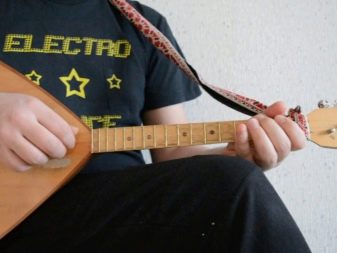
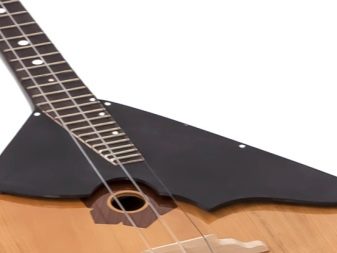
It is important to be able to distinguish between the types of balalaikas.
- Academic balalaika. As a rule, it is only used by professional musicians. Often at concerts they play on academic models of the instrument. Feature - the presence of nylon strings, fixed tuning. They learn to play such a balalaika individually or in music schools and other music educational institutions.
- Traditional balalaika. This balalaika is used by self-taught musicians and ordinary amateurs. Such models can have three or more strings (up to six). There are 7-string models. The reason is that some of the strings are doubled. Feature - metal strings, a variety of settings.

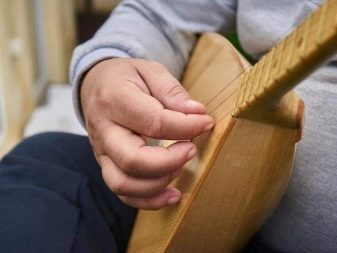
Tool setting
There are several types of balalaika tuning. It should be noted right away that strings of different thicknesses are put on an academic instrument. On an ordinary balalaika, the 1st string is very thin (for example 0.003 inches), and the other two are the same and much thicker (0.010 inches). Other thicknesses are available.
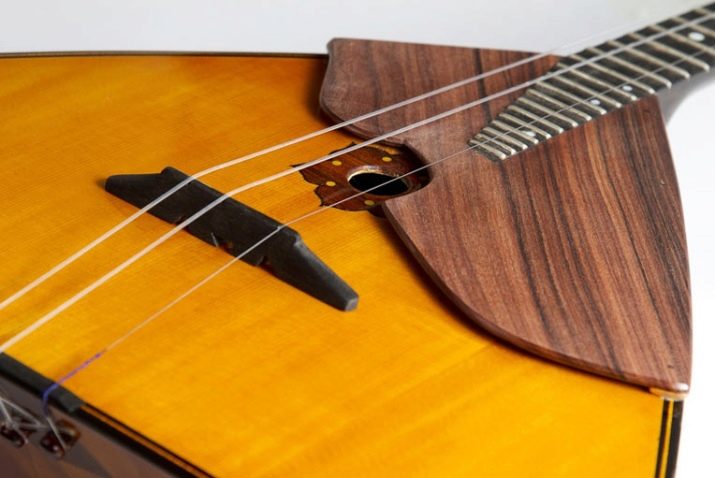
Guitar tuning
It is the most popular balalaika tuning method these days. The first three strings of the Russian seven-string guitar (GBD, if you count from the thickest of them) are tuned according to this principle. This is a major standard, but tuning sounds can be very different:
- CEG;
- DF # A.
The setup includes the following steps.
- It is necessary to tune the first string to the desired pitch using a tuning fork or other tuned musical instrument (piano, for example). Or by voice, if the balalaika accompanies the singing.
- The middle string is clamped at the 3rd fret. After that, it needs to be tuned in unison with the first.
- Finally, the third string is clamped at the 4th fret and tuned in the middle. They should sound the same.
After this tuning, the balalaika sounds like a slender major chord in its basic form.
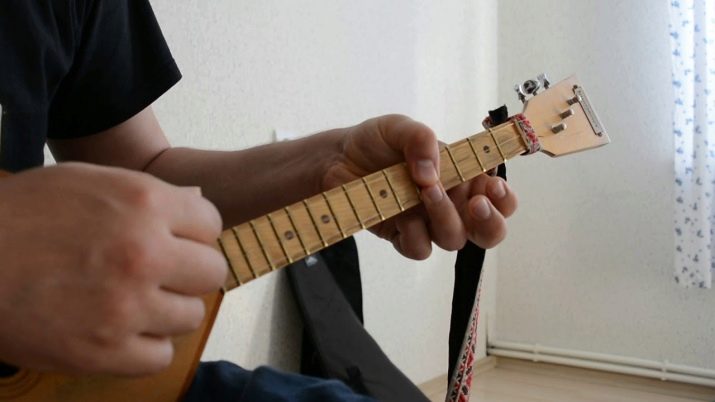
Balalaika system
It is the traditional and oldest type of setting. It is often used by self-taught village musicians in addition to professional musicians. Tuning an instrument for a given tuning is quite easy - you just need to do a few steps.
- First, you need to tune the first string to the desired pitch.
- Then you need to hold down the middle string at the 5th fret. Then it is necessary to make it sound in unison with the first open string.
- With the third string, you need to do the same: hold down on the 5th fret and equalize the sounds with the open first.
As a result, two strings of the same caliber (2nd and 3rd) sound in unison, and the thinnest - 1st - has a sound one clean fourth higher. Some of the popular tunings are EEA and DDF.
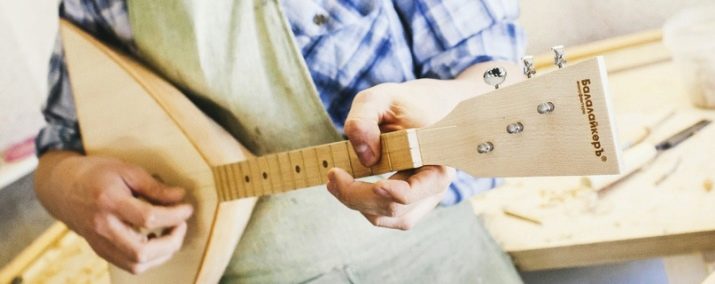
Other settings
These tunings can be called non-standard.They are used extremely rarely - mainly by professionals for a more original sound of the instrument or to expand the repertoire. These include:
- tuning all strings not to a major chord, but to a minor (DFA or ACE);
- reverse guitar (EGC);
- pretty rare DEG tuning.
Tool customization is an important process. If, in the case of a single play, notes sounding out of tune are unpleasant, then in the case of playing in an orchestra or in combination with other instruments, the correct tuning of the balalaika becomes critical.
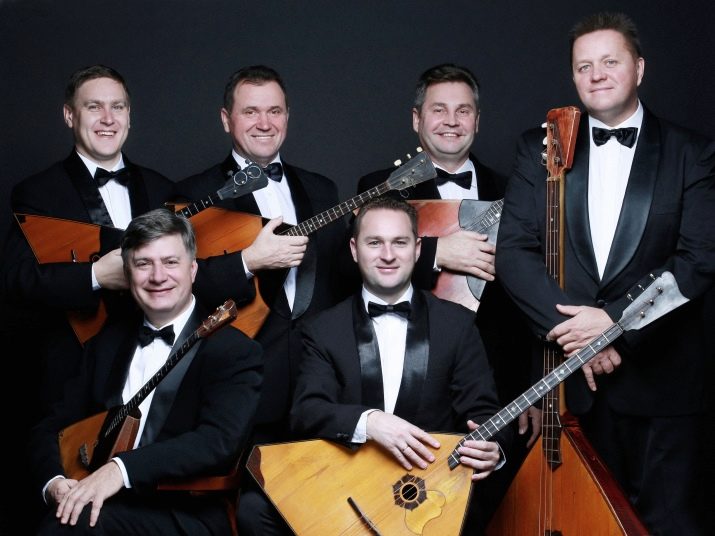
Overview of sound techniques
Tchaikovsky called the balalaika a "Russian miracle" because of its ability to reproduce unusual sounds. One of the reasons for this is the variety of techniques for this. Almost each of the folk melodies that have survived to this day has its own special technique for performing the balalaika.
Simply put, any melody has a technique that is used very often when playing. Most of these techniques can be learned through self-study.
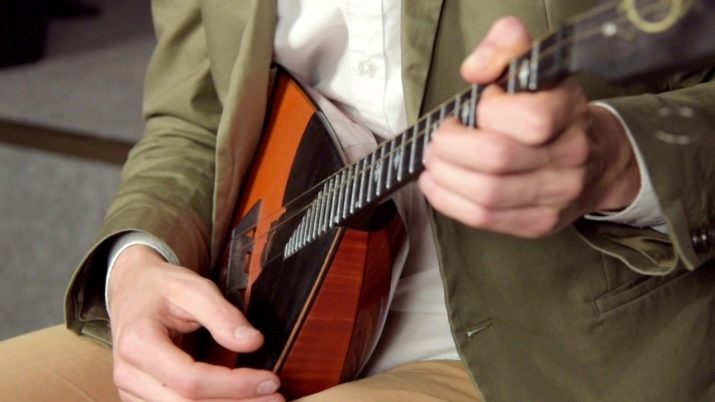
Let's consider them in more detail.
- Tremolo. This technique involves playing the same sound very quickly within a note's duration. It sounds like going through several sounds. This technique is most typical for solo balalaika. It is performed with the index finger, alternating up and down strokes, or with a pick.
- Rattling. This playing technique involves hitting all the strings with your index finger or a pick. In another way, this technique is called "fight". The schematic drawings are as follows:
- ^, which means hitting the index finger up;
- v - hit with the index finger down.
- Pizzicato. To play this technique correctly, you need to pinch with your thumb. To do this, you need to grab the body of the balalaika with four fingers for support, and with your thumb, extract a sound from a string downward. It is considered the simplest technique. Usually, training begins with him.
- Vibrato. The vibrato playing scheme is quite complicated - you need to lightly press on the strings with your right hand after the stand, and play pizzicato with your thumb. You need to do both actions at the same time. It is allowed to play with the index finger of the right hand, as with a tremolo. You can also press the string at the desired fret (according to the melody) with the fingers of your left hand and quickly move it across the neck (this is a technique for many stringed instruments with metal strings).
- Fraction. This technique is called moving the hand down and then up. It is marked with two letters "Dr" and a vertical wavy line sign.
- Flazolet. This technique includes several movements. First, lightly touch the string with the pad of the fingers of your left hand over the designated metal fretboard nut. This is followed by a blow with the finger of the right hand on the same string and almost simultaneous removal of the finger of the left hand from the string.

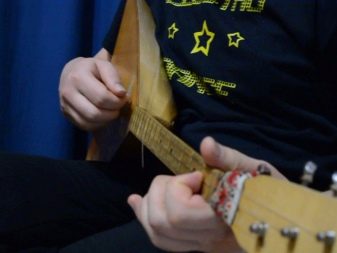
Also, some others can be added to the above techniques. They are a group of actions that result in sounds that are not very similar to musical sounds: squeaks, percussion strikes on the body, strings, and so on. Some works may require these sounds as well.
The complete list of techniques that can be played on the instrument is not limited to these examples. Only the main ones are described here.
Some professionals can, by mixing techniques, play rock easily, which is considered the supreme art of balalaika.

The main difficulties
As mentioned, the fingers, especially the pads, will hurt. It is also worth noting that girls playing the balalaika will need to say goodbye to a beautiful manicure.
Choosing the right tool is an important factor. The fact that the instrument is good, more often than not, can be seen almost immediately - it has a beautiful, neat appearance. The surface of such a balalaika is well polished, its edges are smooth and pleasant to the touch. The neck of the instrument must be straight.It should not be too wide or, conversely, too narrow. The surface must be free of cracks, scratches or other irregularities.
Frets should ideally be smooth, well-sanded. When playing, they should not interfere with the movement of the fingers. All frets must be on the same plane. Otherwise, a rattling or even squeaky sound will be produced when you press the fret. Frets made of white metal or nickel have proven themselves well. The tuners should not be rusted, and should also rotate easily, but at the same time clearly fix the mood.
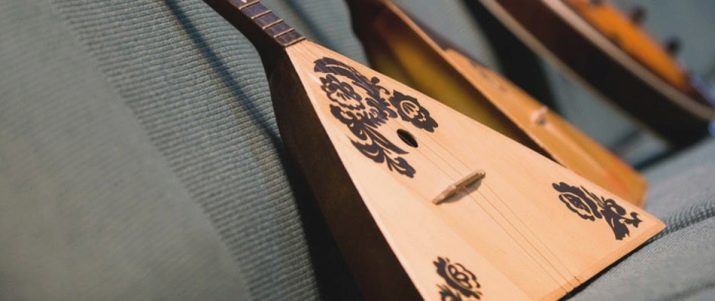
Good tools have dot markings that indicate where to place the stand. The distance from the bridge to the 12th fret should be the same as the distance from the nut to the same 12th fret. If the stand is installed incorrectly, the sound of the balalaika will be inaccurate. In addition, you need to remember that the size of the instrument will be directly related to its sound. The larger the body, the thicker the strings, and the longer the neck, the lower the bass tones will be. For a beginner, medium sized tools are best.
Professionals say that from scratch, in a week with daily training for several hours, it is quite possible to learn how to play a couple of folk songs on your own. If, of course, the fingers allow, or rather, the pain in them.
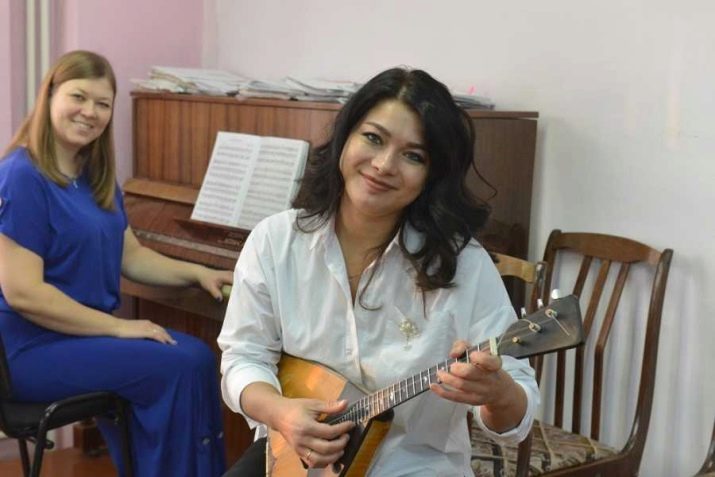
Recommendations
Most of those who wish can learn to play the balalaika without attending specialized courses. Beginners can use the lessons on a variety of platforms and self-study sites. Tutors are at the service of those who want to improve their knowledge of music theory and the skill of their playing.
Professionals provide a number of tips to help beginners. They should be guided by.
- To devote to classes every day 2 hours - for an hour 2 times a day. This way you can quickly get used to the instrument, and over time, speed up the memorization of melodies.
- It is necessary to monitor the position of the body while playing the balalaika. It is best to sit on the edge of a chair, hold the instrument clamped between your legs at an angle, hold the bar with your left hand, your elbows should not be pressed against your body, but you should definitely relax them. The correct fit will reduce fatigue while playing and improve the sound quality.
- If your fingers hurt badly, this does not mean that you need to give them a break. After a break, the pain will resume. Classes should be continued - at least a few minutes 3-4 times a day, until calluses form.
- Make sure that the instrument is always correctly tuned. Otherwise, the learning outcomes can be nullified.
- It is important to check the quality of the frets. If they are rough or simply interfere with the game, then you need to carefully grind them yourself with sandpaper ("zero").
- If the tool breaks down, it is recommended to have it repaired by a qualified technician, and not rush to fix it yourself.
- Caring for the instrument is also an important exercise. The strings need to be degreased after each workout. If you do not plan to use the balalaika in the near future, then you need to release the tension on the strings. All these actions will lead to the fact that the life of the strings will increase. It is preferable to store the tool in a case. Storing the balalaika in a very humid room or high humidity conditions will have a detrimental effect on its quality. The neck may lose its original shape and the strings will deform.
- It is best to study in a special studio with a teacher who can provide sheet music or other necessary educational literature during the training.
- Not the best solution is to sign up for paid clubs right away. This is especially true for adults. Your best bet is to practice on your own with free classes first. This will help you understand what you really need.
- Try to participate in teaching at concerts, open lessons, master classes. This gives a good incentive for the further development of the performing technique and setting new tasks for oneself.

It is worth noting that playing the balalaika is simple, so even a child can acquire playing skills. Everyone who knows how to play the balalaika always has a well-developed motor skills. Its presence improves not only a good ability to control your body, but also improves the skills of learning new things.
For information on how to play the balalaika, see the next video.








